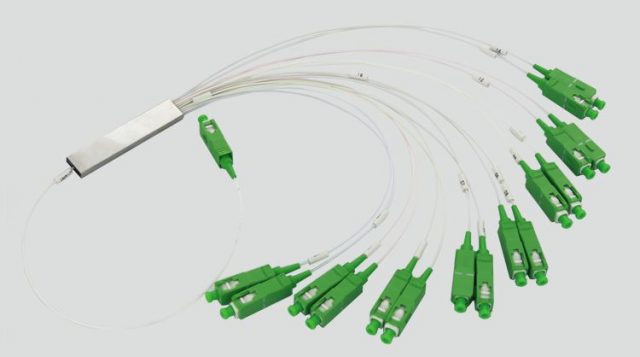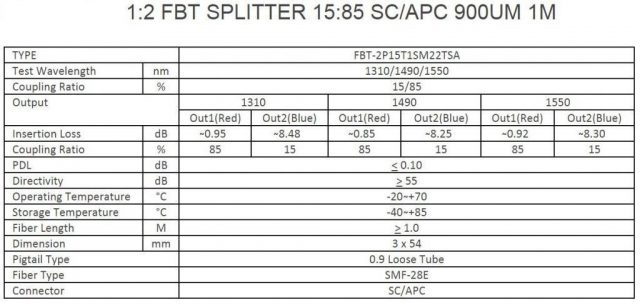Fiber Optical spliter, known as fiber optic beam splitter, is an integrated waveguide optical power distribution device, similar to a coaxial cable transmission system. Fiber optic splitters are an important passive component in fiber networks, which are used to split the fiber optic light into several parts at a certain ratio. Optical splitters are in two types According to the working principle, So they can be divided into two types—FBT (Fused Biconical Taper) splitter and PLC (Planar Lightwave Circuit) splitter. The following knowledge is helpful for you to purchase the suitable splitter.
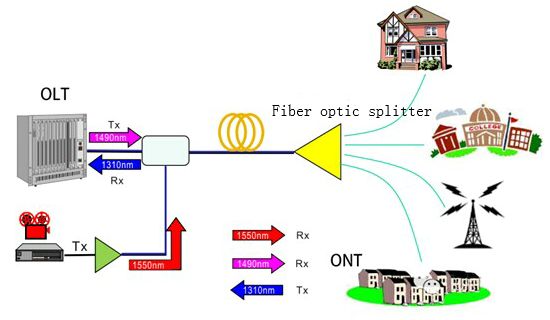
PLC Fiber Optic Splitter
PLC splitters offer a better solution for applications where larger split configurations are required. To achieve this, waveguides are fabricated using lithography onto a silica glass substrate, which allows for routing specific percentages of light. As a result, PLC splitters offer very accurate and even splits with minimal loss in an efficient package.
With the rapid growth of FTTx worldwide, the requirement for larger split configurations (1×32, 1×64, etc) in these networks has also grown in order to serve mass subscribers. Due to the performance benefits and overall low cost to deploy, PLC splitters are now the ideal solutions for FTTH, FTTB applications. The following image shows 1×16 blockless plc splitter, which is usually used in 24 or 16 port fiber distribution box.
Advantages
- Suitable for multiple operating wavelengths (1260nm – 1650nm); unstinted.
- Equal splitter ratios for all branches.
- Compact configuration; smaller size; small occupation space.
- Good stability across all ratios.
- High quality; low failure rate.
Disadvantages
- Complicated production process.
- Costlier than the FBT splitter in the smaller ratios.
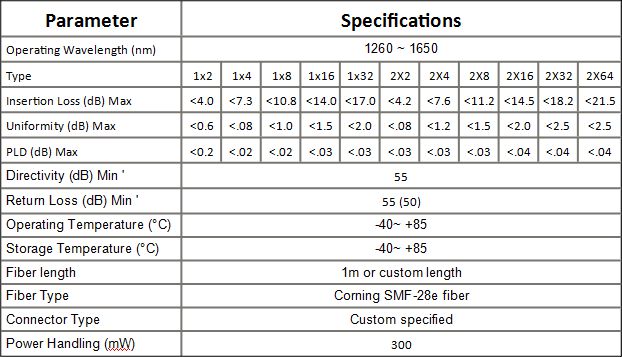
FBT Fiber Optic Splitter
Fused Biconical Taper is a kind of traditional technology in which two or more than two fibers welded closely together by applying heat. FBT splitters are made of steel, fiber, hot dorm. They come at a low price, which explains the cost-effective feature of the device itself. As this technology has been developed over time, FBT splitters are wildly used. They are applicable for both single-mode and multi-mode fibers compliant with a variety of connector types, widely accepted and used in passive optical networks, especially for the split configuration is smaller (1×2, 1X4, 2×2, etc.). The following picture shows a 1×4 single-mode FBT splitter.
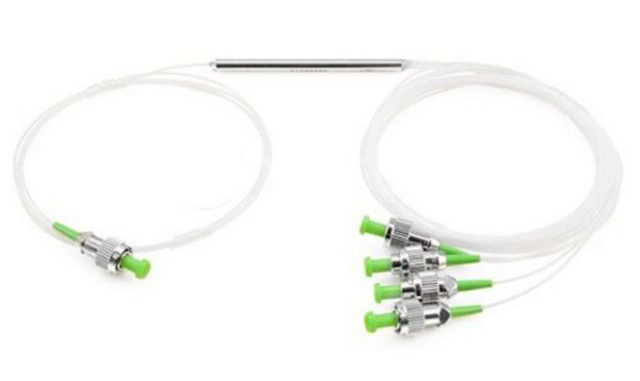
Advantages
- The product is well-known and is easy to produce, thus reducing the cost of production.
- Splitter ratios available to customize
- Can work on three different operating bands (850nm, 1310nm, and 1550nm).
Disadvantages
- Restricted to its operating wavelength.
- Because of error inequality insertion loss, the maximum insertion loss will vary depending on the split and increase substantially for those splits over 1:8.
- Because an exact equal ratio cannot be ensured, transmission distance will be affected.
- High temperature-dependent loss (TDL). The operating temperature range is 23 °F- 167 °F. Any changes in temperature can affect the insertion loss.
- The larger the split, the larger the encapsulation module.
- Susceptible to failure due to extreme temperatures or improper handling.

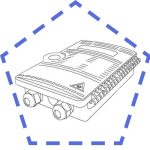 Fiber Optic Termination Boxes
Fiber Optic Termination Boxes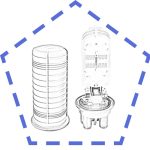 Fiber Optic Splice Enclosures
Fiber Optic Splice Enclosures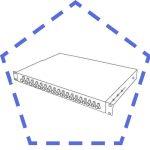 Fiber Patch Panels
Fiber Patch Panels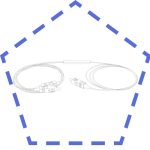 Fiber Optic Splitters
Fiber Optic Splitters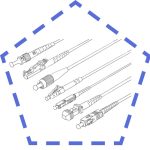 Fiber Optic Pigtails
Fiber Optic Pigtails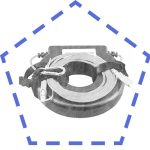 OTDR Launch Cables
OTDR Launch Cables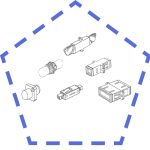 Fiber Optic Adapters
Fiber Optic Adapters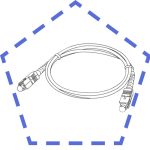 Fiber Optic Patch Cords
Fiber Optic Patch Cords